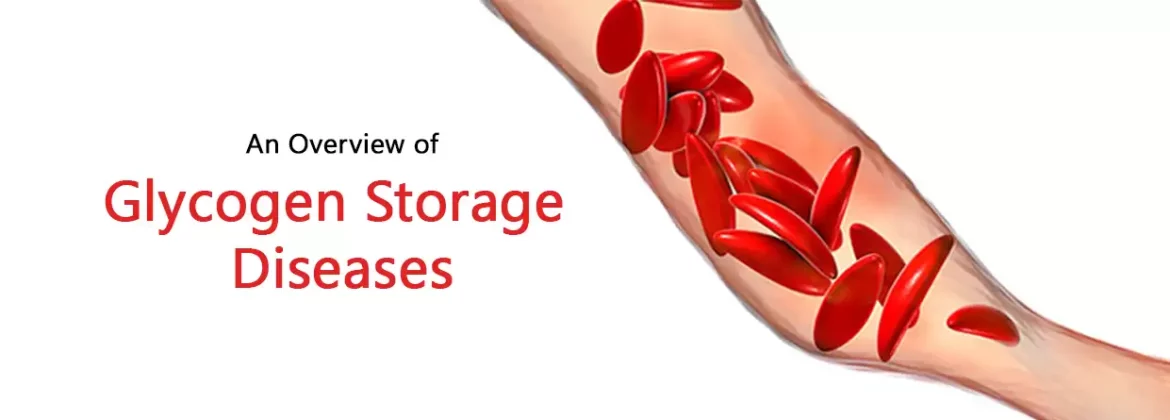Von Gierke’s disease, also known as glycogen storage disease type Ia (GSD Ia), is a rare genetic disorder that affects carbohydrate metabolism. This condition is caused by a deficiency in glucose-6-phosphatase, an enzyme crucial for the final step of gluconeogenesis and glycogenolysis. The absence or dysfunction of this enzyme leads to an inability to properly regulate blood sugar levels and results in the accumulation of glycogen in tissues, particularly the liver and kidneys.
Understanding Von Gierke’s Disease
Von Gierke’s disease is inherited in an autosomal recessive manner, meaning that a child must inherit two copies of the defective gene (one from each parent) to develop the condition. The primary manifestations of GSD Ia include severe hypoglycemia (low blood sugar), hepatomegaly (enlarged liver), and growth retardation. Patients also commonly exhibit hyperlipidemia, a condition characterized by elevated levels of lipids (fats) in the bloodstream, which can predispose them to various cardiovascular complications, including myocarditis.
see also: What Is The First-Line Management of Hyperlipidemia?
Mechanisms Behind Hyperlipidemia in Von Gierke’s Disease
Impaired Glucose Metabolism:
Due to the deficiency in glucose-6-phosphatase, glucose production from glycogen breakdown is impaired. This results in chronic hypoglycemia, which triggers a cascade of metabolic changes aimed at compensating for the lack of glucose.
Increased Lipogenesis:
In response to chronic hypoglycemia, the body increases lipogenesis (the synthesis of lipids), particularly in the liver. This is a compensatory mechanism to provide an alternative energy source when glucose availability is limited.
Elevated Triglycerides:
Triglycerides are the most abundant form of fats in the body and are synthesized from excess glucose and fatty acids. In von Gierke’s disease, the inability to regulate glucose metabolism leads to an overproduction of triglycerides, contributing to hypertriglyceridemia.
Reduced Lipid Clearance:
Patients with GSD Ia often have impaired lipid clearance mechanisms due to liver dysfunction and altered lipid metabolism.
This further exacerbates the accumulation of lipids in the bloodstream, leading to hyperlipidemia.
Clinical Implications of Hyperlipidemia in Von Gierke’s Disease
Cardiovascular Risks:
Elevated levels of lipids, particularly triglycerides and cholesterol, increase the risk of atherosclerosis and cardiovascular disease in individuals with von Gierke’s disease. These patients may develop early-onset cardiovascular complications, including myocarditis.
Impact on Liver Function:
The liver plays a central role in lipid metabolism. In von Gierke’s disease, hepatomegaly and liver dysfunction contribute to impaired lipid clearance and exacerbate hyperlipidemia. This can lead to further complications such as fatty liver disease and liver cirrhosis.
Management Challenges:
Managing hyperlipidemia in patients with GSD Ia is challenging due to the underlying metabolic abnormalities. Treatment strategies often include dietary modifications, such as low-fat and high-complex carbohydrate diets, along with medications to control lipid levels. Regular monitoring and early intervention are crucial to mitigate cardiovascular risks.
Conclusion
Hyperlipidemia in von Gierke’s disease is intricately linked to the underlying metabolic dysregulation caused by the deficiency in glucose-6-phosphatase. The inability to properly metabolize glucose leads to an overproduction and impaired clearance of lipids, resulting in elevated lipid levels in the bloodstream. This condition not only exacerbates metabolic complications but also significantly increases the risk of cardiovascular diseases, including myocarditis. Understanding the mechanisms behind hyperlipidemia in GSD Ia is essential for developing effective management strategies aimed at improving patient outcomes and reducing long-term cardiovascular risks.
FAQs
What is the main cause of hyperlipidemia?
Hyperlipidemia, or high levels of lipids (fats) in the blood, can have several causes, including:
Genetic Factors: Some individuals may inherit genetic conditions that predispose them to lipid abnormalities, such as familial hypercholesterolemia or familial combined hyperlipidemia.
Dietary Habits: Consuming a diet high in saturated fats, trans fats, and cholesterol can increase lipid levels in the bloodstream.
Obesity: Excess body weight, especially abdominal fat, can contribute to elevated lipid levels.
Physical Activity Levels: Lack of regular physical activity can lead to imbalances in lipid metabolism.
Medical Conditions: Certain medical conditions, such as diabetes mellitus, hypothyroidism, and chronic kidney disease, can disrupt lipid metabolism and lead to hyperlipidemia.
Medications: Some medications, including corticosteroids, diuretics, and certain immunosuppressants, can affect lipid levels.
Why are triglycerides high in glycogen storage disease?
In glycogen storage diseases (GSDs), particularly type Ia (von Gierke’s disease), high triglyceride levels are primarily due to:
Impaired Glucose Metabolism: GSD Ia is characterized by a deficiency in glucose-6-phosphatase, which impairs glucose production from glycogen breakdown. This leads to chronic hypoglycemia, triggering compensatory mechanisms that increase triglyceride synthesis as an alternative energy source.
Increased Lipogenesis: The liver, in response to chronic hypoglycemia, increases lipogenesis (synthesis of fats), leading to the overproduction of triglycerides.
Reduced Lipid Clearance: Liver dysfunction in GSD Ia impairs the clearance of triglycerides from the bloodstream, exacerbating their accumulation.
Why is there hyperuricemia in von Gierke disease?
Hyperuricemia, or high levels of uric acid in the blood, occurs in von Gierke disease due to several interrelated factors:
Increased Purine Synthesis: Chronic hypoglycemia in GSD Ia leads to increased production of lactic acid and pyruvate, which are converted to oxaloacetate. This stimulates purine synthesis, increasing uric acid production.
Reduced Uric Acid Excretion: The kidneys may have impaired function due to glycogen accumulation and structural changes, reducing the excretion of uric acid.
Altered Glucose and Purine Metabolism: Dysregulation of glucose metabolism affects multiple pathways, including those involved in purine metabolism, contributing to hyperuricemia.
Secondary Effects of Metabolic Dysfunction: Liver dysfunction and metabolic disturbances in GSD Ia contribute to altered uric acid metabolism, further exacerbating hyperuricemia.


